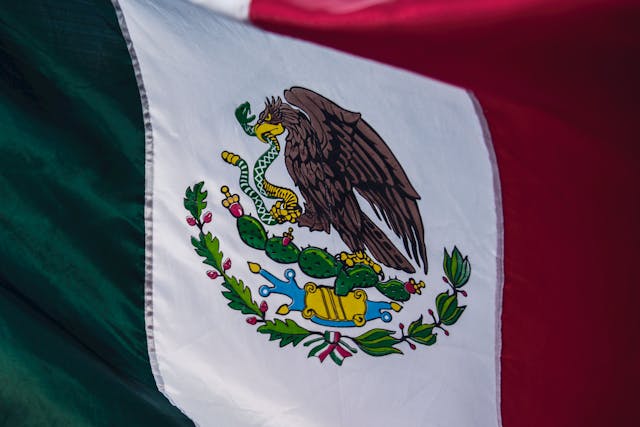Mexican Vs Argentinian Spanish Vocabulary

Mexico and Argentina are two vibrant countries with rich histories and unique cultures. From ranchera and tango to tacos and asado, these nations showcase a dazzling array of cultural differences. These distinctions are also vividly reflected in their language. Here, we explore some of the most intriguing Mexican vs. Argentinian Spanish differences.
→Find a Native Tutor and Start Learning a Language Now←
Mexican vs. Argentinian Spanish Words for Things and Places
Antro Vs Boliche
When Mexican people go clubbing, they say they go to the “antro.” While this word does exist in Argentinian Spanish, it’s used to refer to an ill-repute place, one of those terrible pubs where people go to get into trouble. The most common Argentine expression for “clubbing” is going to the “boliche.” In Mexico, this means to go play bowls!
Cajeta Vs Dulce de Leche
In Mexican vocabulary, “cajeta” is a delicious caramel-like sweet made from goat’s milk. However, in Argentinian slang, the word “cajeta” is a vulgar slang term to refer to female anatomy and definitely not something you’d ask for at a dessert shop. Instead, Argentinians enjoy “dulce de leche,” a creamy caramel spread made from cow’s milk.
Chorro Vs Ladrón
In Argentina, a thief is called a “chorro.” On the other hand, in Mexico, you might say “ladrón” for a thief. Interestingly, in Mexico, “chorro” means a lot of something, so you might hear someone say, “Hay un chorro de ladrones!” meaning “There are a lot of thieves!”
Chorear Vs Hablar al Pedo
When an Argentinian says someone is “choreando,” it means they are being robbed. However, in Mexico, “chorear” means to talk nonsense, similar to the Argentinian slang phrase “hablar al pedo.”
Frutillas Vs Fresas
Argentinians enjoy eating “frutillas,” which is their word for strawberries. Meanwhile, in Mexico, strawberries are called “fresas.” Additionally, calling someone “fresa” in Mexico means they are snobbish or posh, which in Argentina would be referred to as “cheto.”
Madrazos Vs Piñas
In a fight, Mexicans might use the word “madrazos” to describe punches, while Argentinians would say “piñas.” When it comes to Mexican vocabulary, eating a “piña” means eating a pineapple, but in Argentina, it’s called an “ananá.”
Joda Vs Fiesta
In Argentina, when people are going out to party, they say they’re going “de joda.” In Mexico, the equivalent would be going “de fiesta.” After the party, Argentinians might suffer from “resaca,” while Mexicans experience a “cruda.”
Chelas Vs Birras
Here’s one of the handiest Mexican vs. Argentinian Spanish differences! When drinking beer, Mexicans often refer to it as “chelas,” whereas Argentinians call them “birras.”

Mangos Vs Varos
When discussing money, Mexicans use the word “varos” while Argentinians say “mangos.” Interestingly, a Mexican without a “mango” is missing a tropical fruit, while an Argentinian without a “mango” has no money.
Camión Vs Colectivo
In Mexico, the word “camión” refers to a bus. In Argentina, they use “colectivo” or “bondi” for the same purpose. Interestingly, “camión” in Argentina means a truck.
Kiosco Vs Tiendita
Argentinians go to a “kiosco” to buy snacks and other small items, while Mexicans visit a “tiendita” for the same purpose.
Sudadera Vs Campera
In Mexico, you wear a “sudadera” when it’s cold. In Argentina, you put on a “campera” or a “buzo” over your “remera.”
Maní Vs Cacahuate
Argentinians munch on “maní,” whereas Mexicans enjoy “cacahuates” for peanuts. Similarly, “aguacate” in Mexico is known as “palta” in Argentina, and “betabel” in Mexico is “remolacha” in Argentina.
Panqueques Vs Crepas
For breakfast or dessert, Mexicans love “crepas” and “pan dulce.” In Argentina, you would ask for “panqueques” and “facturas.”
Mexican vs. Argentinian Spanish Words for People
Vieja Vs Jefa
In Argentinian slang, “vieja” is a colloquial term for one’s mother, whereas in Mexico, “jefa” is commonly used. However, when a Mexican refers to his “vieja,” he is talking about his wife, not his mother.
Chocho Vs Chochear
An Argentinian who is very happy might say they are “chocho de la vida,” meaning they are delighted with life. However, in Mexico, “chochear” means to start acting senile due to old age.
Güey Vs Boludo
In casual conversation, Mexicans often call each other “güey,” a term of endearment similar to “dude.” Argentinians, however, use the word “boludo” for the same purpose, though it can also be an insult depending on the context.
Persona Chida Vs Persona Piola
In Mexican vocabulary, a cool person is “chida,” while in Argentina, they are “piola.” Similarly, to say someone is “a toda madre” in Mexico, an Argentinian would say “re copado.”
Pibes Vs Chavos
Young people in Argentina are referred to as “pibes,” while in Mexico, they are “chavos.”
Minas Vs Chavas
In Argentina, attractive women are called “minas,” whereas in Mexico, they are called “chavas.”
Miscellaneous Mexican vs. Argentinian Spanish Phrases
Netas Vs Postas
To express the truth, a Mexican might say “la neta,” while an Argentinian would say “la posta.”
¡Basta de cháchara! Vs ¡Basta de chácharas!
To tell someone to stop talking too much, an Argentinian might say “¡Basta de cháchara!” while a Mexican says “¡Basta de chácharas!” but referring to the clutter of items.
Pérate Tantito Vs Pará un Poquito
In Mexico, to ask someone to wait a bit, you say “pérate tantito,” while in Argentina, you say “pará un poquito.”
Súper Mal Vs En el Horno
When things are going really bad, Mexicans might say “súper mal,” while Argentinians say “está en el horno,” which literally means “in the oven” but implies a dire situation.
Debrayar Vs Flashear
When someone is daydreaming or acting crazy, a Mexican might say “debrayar,” whereas the most common Argentinian slang phrase for this is “flashear.”
¡No Mames! Vs ¡No Jodas!
To express disbelief or annoyance, Mexican vocabulary has the phrase “¡No mames!” However, Argentinians say “¡No jodas!” or “Me estás jodiendo” (literally: Don’t f*** with me!)

Cháchara Vs Chácharas
Argentinians use “cháchara” to describe idle chatter, small talk, or white lies. In Mexico, “chácharas” refer to cheap trinkets or knick-knacks found at markets.
Desmadre Vs Quilombo
For a big mess or chaos, Mexicans say “desmadre,” while Argentinians call it “quilombo.” If things get out of hand, in Mexico, the police, “la chota,” might come, whereas in Argentina, it’s “la yuta.”
Spanish is a wonderfully diverse language, and these differences in vocabulary highlight the rich cultural tapestries of Mexico and Argentina. Whether you’re planning to visit or just curious about the language, understanding these terms can enhance your appreciation and communication in these vibrant Spanish-speaking countries.
Would you like to learn more Mexican vs. Argentinian Spanish differences? Our courses are taught in person by native speakers, ensuring you get an authentic learning experience tailored to the variety of Spanish you wish to master. Whether you want to perfect your Mexican slang or immerse yourself in the unique phrases of Argentinian Spanish, our expert instructors are here to guide you every step of the way.


